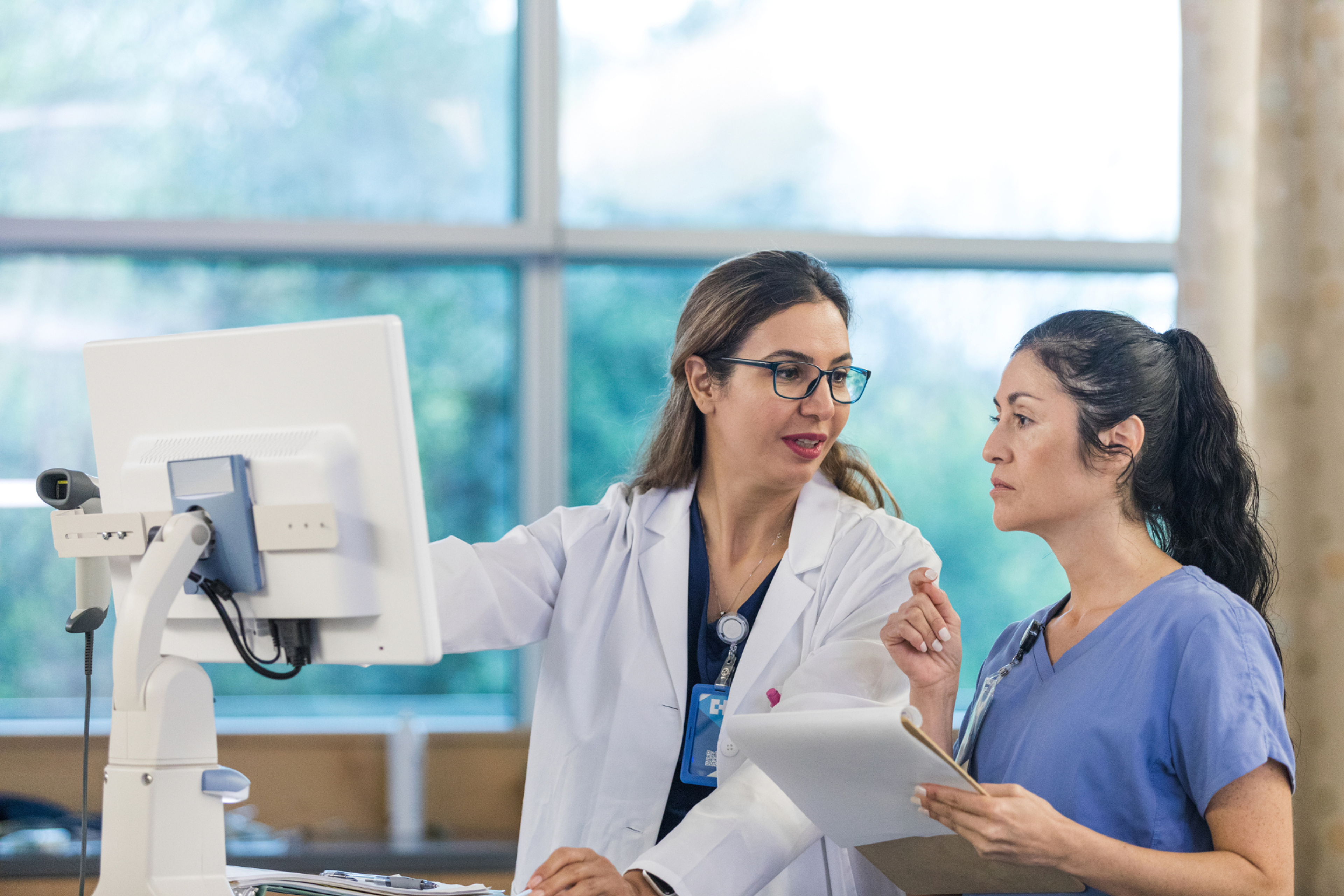What Do You Learn in Dental School?
Discover what it takes to become a dentist by exploring the curriculum of dental school.
Posted June 16, 2025

Join a free event
Learn from top coaches and industry experts in live, interactive sessions you can join for free.
Table of Contents
Dental school provides an intensive, structured education that prepares students for the complexities of clinical practice. Over a rigorous four-year program, students gain the foundational knowledge required to diagnose and treat oral diseases, master clinical procedures, and develop essential interpersonal skills for effective patient care.
The dental curriculum integrates preclinical operative dentistry, gross anatomy, radiology, and restorative dentistry while emphasizing oral disease prevention and health promotion. By the end of their education, dental students are equipped to handle everything from routine check-ups to oral and maxillofacial surgery.
Read: How to Become a Dentist: Application, Degree Programs, FAQs
The Structure of Dental Education
The years of dental school are typically divided into two phases:
- Preclinical Education – The first two years focus on basic sciences, including cell biology, human biology, systemic pathology, and general and systemic pathology. During this phase, students build a thorough understanding of oral tissues, salivary glands, and the temporomandibular joint.
- Clinical Training – The final two years involve clinical experiences, where students transition into real patient care. They refine diagnosis techniques, develop treatment plans, and gain hands-on experience in a clinical setting.
Years 1 & 2: Preclinical Education – Building the Foundation
During the first two years, dental students concentrate on basic sciences, which provide an essential understanding of oral health, systemic pathology, and the structure and function of the human body. These courses lay the groundwork for diagnosing and treating dental conditions effectively.
Core Preclinical Courses:
Anatomy & Physiology
A strong grasp of anatomy and physiology is essential for dental students, as it helps them understand the structure and function of the oral cavity, temporomandibular joint, oral tissues, and salivary glands. This subject covers the detailed study of the head and neck region, emphasizing how these structures relate to oral health care and overall bodily functions.
Biochemistry & Microbiology
Biochemistry and microbiology provide crucial insights into the chemical and microbial processes affecting oral health. Students learn about oral disease prevention, how bacteria contribute to oral pathology, and how metabolic functions impact dental health. This basic knowledge is essential in understanding conditions like periodontal disease, tooth decay, and systemic infections that originate in the mouth.
Pharmacology
Dentists frequently prescribe medications for pain management, infection control, and oral disease treatment. The study of pharmacology teaches students how drugs interact with oral and maxillofacial conditions, how to manage treatment plans, and how various medications affect general health. It also covers potential drug interactions and allergies that could impact dental practice.
Dental-Oriented Sciences
- Oral Anatomy: The Structure of Teeth and Jaws
Oral anatomy focuses on the primary and permanent dentition, covering the gross anatomy of the teeth, alveolar bone, and supporting structures. This course is critical for understanding tooth morphology, occlusion, and how dental materials interact with natural teeth in restorative dentistry.
- Oral Histology: The Microscopic Study of Oral Tissues
Oral histology delves into the microscopic structure of oral tissues, including the enamel, dentin, pulp, and gingival tissues. A deep understanding of these structures is essential for diagnosing oral diseases, developing accurate treatment plans, and ensuring the longevity of dental restorations.
- Oral Pathology: Identifying and Treating Oral Diseases
Oral pathology involves the study of general and systemic pathology related to the diagnosis of oral diseases. Students learn to recognize conditions such as oral cancer, cysts, tumors, and infectious diseases affecting the oral cavity. Mastery of this subject is essential for early disease detection, risk assessment, and accurate diagnosis in clinical dentistry.
Transitioning to Clinical Education
While the first two years of dental school focus on theoretical knowledge, students gradually begin clinical education in simulation settings. They practice basic dental procedures on models of the oral cavity, gaining hands-on experience with dental instruments, infection control techniques, and treatment planning before treating real patients.
Additionally, dental schools emphasize the importance of health promotion, person-centered care, and interpersonal skills, ensuring that students are well-prepared to work with diverse populations in a dental practice setting.
In these years, students also begin clinical education in a simulation setting, where they practice basic dental procedures on models of the oral cavity before transitioning to treating real patients.
Additionally, dental schools emphasize health promotion, person-centered care, and interpersonal skills, preparing students to work with diverse populations in a dental practice setting.
Years 3 & 4: Clinical Education – Hands-On Patient Care
The final two years of dental school mark the transition from classroom-based learning to clinical dentistry. Students move from practicing on models to treating real patients under the supervision of experienced dentists and faculty members. This hands-on phase allows students to apply their foundational knowledge in a clinical setting, developing the critical skills required for independent practice.
Clinical education focuses on accurate diagnosis, patient-centered treatment, and the management of complex dental conditions. Students rotate through various specialties, gaining exposure to different areas of oral health care and refining their expertise in treatment planning and patient management.
Core Clinical Experiences:
Restorative Dentistry & Operative Dentistry
Students gain hands-on experience performing clinical procedures such as cavity fillings, crowns, and bridges. This training focuses on selecting the appropriate dental materials, ensuring long-lasting restorations, and understanding how to preserve oral health through minimally invasive techniques.
Periodontology & Oral Medicine
Training in periodontology equips students to diagnose and treat oral pathology related to the gums and supporting structures. They learn to manage gingivitis, periodontitis, and other periodontal diseases, employing techniques for oral disease prevention and long-term gum health maintenance.
In oral medicine, students study the relationship between systemic pathology and oral health, learning how conditions like diabetes, cardiovascular disease, and autoimmune disorders impact the oral cavity.
Pediatric Dentistry & Geriatric Dentistry
Comprehensive dental care requires expertise in managing patients at different life stages.
- Pediatric dentistry focuses on the treatment of primary dentition, child behavior management, and preventive care strategies such as fluoride application and sealants.
- Geriatric dentistry addresses the unique oral health challenges of elderly patients, including tooth loss, dry mouth, medication-related complications, and complex treatment plans tailored to aging populations.
Through these rotations, dental students develop well-rounded skills that prepare them to treat a diverse patient base.
Oral & Maxillofacial Surgery
Students receive training in oral and maxillofacial surgery, learning techniques for tooth extractions, bone grafting, and the management of maxillofacial trauma. Understanding surgical complications and their prevention is a key aspect of this specialty, ensuring that students can provide safe and effective surgical care in their future dental practice.
Infection Control & Risk Assessment
Strict infection control protocols are essential in every clinical setting. Students learn to implement sterilization techniques, personal protective equipment (PPE) usage, and universal precautions to prevent cross-contamination.
Additionally, they engage in risk assessment, identifying potential infection risks in patients with underlying medical conditions and ensuring that all procedures are performed safely.
Radiology & Digital Dentistry
Radiology plays a crucial role in diagnosis and treatment planning. Students train in various imaging techniques, including intraoral and extraoral X-rays, cone-beam computed tomography (CBCT), and panoramic imaging, to detect oral pathology, jaw abnormalities, and impacted teeth.
Additionally, digital dentistry is integrated into clinical education, exposing students to CAD/CAM technology, 3D printing, and digital impressions that enhance precision and efficiency in modern dental practice.
Real-World Clinical Rotations
Clinical rotations are a critical component of dental education, offering students hands-on experience beyond the classroom and simulation labs. Top dental schools integrate off-campus rotations in hospitals, community clinics, and specialty practices, exposing students to real-world scenarios where they apply their skills in dental medicine under supervised conditions. These rotations ensure that future dentists develop the clinical expertise necessary to provide comprehensive oral health care while collaborating with professionals in broader healthcare settings.
Interdisciplinary Collaboration: Learning from Medical Students and Physicians
One of the most valuable aspects of clinical rotations is the opportunity for dental students to work alongside medical students, physicians, and allied health professionals. This interdisciplinary approach fosters a deeper understanding of how oral health connects to systemic conditions such as diabetes, cardiovascular disease, and autoimmune disorders.
Through exposure to hospital-based care, students gain insight into managing medically complex patients, learning to adapt treatment plans that consider underlying systemic pathology. By engaging with professionals from medical schools and healthcare teams, students refine their diagnostic skills and adopt a team-based approach to patient care that mirrors real-world practice.
The Role of Dental Public Health
Clinical rotations often extend into dental public health settings, where students gain experience providing care to underserved populations. These rotations emphasize the importance of health promotion, oral disease prevention, and risk assessment, preparing students to address the disparities in access to dental care that impact many communities.
By working in community clinics, rural health centers, and mobile dental units, students learn to:
- Provide preventive and restorative care in non-traditional settings.
- Develop treatment plans tailored to diverse populations, including low-income and special-needs patients.
- Educate patients on oral health care and hygiene practices to prevent long-term dental issues.
- Understand the public health policies that shape dental practice and healthcare access.
These experiences not only enhance clinical dentistry skills but also instill a strong sense of professional responsibility, ensuring that graduates of dental school are prepared to serve patients in both private practice and public health roles.
The Future of Dental Medicine
By integrating real-world clinical rotations, dental schools provide students with a thorough understanding of patient care in various settings, from specialized hospital units to community outreach programs. These rotations bridge the gap between dental medicine and general healthcare, reinforcing the role of dentists in diagnosing and managing oral conditions that impact overall health.
Ultimately, these experiences prepare graduates not only for private dental practice but also for careers in academic dentistry, public health, and interdisciplinary medical collaborations, ensuring that they are equipped to provide the highest level of patient-centered care in a rapidly evolving healthcare landscape.
How Top Dental Coaches Can Help Students Succeed
The dental school curriculum is rigorous, demanding students to master dental anatomy, clinical procedures, and emerging technologies like digital dentistry while balancing academic pressures and hands-on training. Navigating this complex four-year program requires not just dedication but also strategic guidance to ensure success in both clinical education and career preparation.
This is where top dental coaches play a crucial role. These experienced professionals provide personalized mentorship, study strategies, and practical insights that help students:
- Master complex topics efficiently – Dental coaches break down intricate subjects like oral pathology, radiology, and restorative dentistry, helping students develop a thorough understanding of key concepts.
- Excel in clinical procedures – With real-world expertise, coaches offer guidance on treatment plans, patient management, and infection control, ensuring that students gain confidence in a clinical setting.
- Prepare for licensing exams – Success in dental medicine requires passing rigorous board exams. Top dental coaches provide targeted strategies to excel in the National Board Dental Examination (NBDE) and other licensing assessments.
- Navigate career paths in dentistry – Whether students aim for private practice, dental public health, oral surgery, or specialized fields, mentors help them align their skills with their long-term goals.
Read next:
- DMD vs. DDS: What's the Difference and Which is Better?
- The Complete Guide to the Dental School Application
- Dental School Interview Guide
FAQs
What is the difference between a D.D.S. and a D.M.D. degree?
- Both Doctor of Dental Surgery (D.D.S.) and Doctor of Dental Medicine (D.M.D.) degrees are equivalent and signify that a dentist has graduated from an accredited dental school. The distinction in titles is determined by the awarding institution, but both degrees entail the same curriculum requirements.
Is a bachelor's degree required for admission into dental school?
- While some dental schools may accept applicants with a minimum of 90 semester credit hours, a bachelor's degree is strongly recommended. It provides a broad, liberal education and a major field of study, which can be beneficial if one decides to pursue an alternative career.
What undergraduate major is preferred for dental school admission?
- Dental schools do not require a specific undergraduate major. However, a strong foundation in the sciences is essential, so many students choose majors like biology or chemistry.
What are the prerequisite courses for dental school?
- Typically, dental schools require one year each of General Biology, General Chemistry, Organic Chemistry, General Physics (all with labs), and courses in Human Anatomy, Biochemistry, and English.
How long is dental school?
- Dental school programs generally span four academic years.
What is the Dental Admission Test (DAT), and when should it be taken?
- The DAT is a standardized exam required for dental school admission, assessing knowledge in natural sciences, perceptual ability, reading comprehension, and quantitative reasoning. Most students take the DAT in the spring of the year preceding their anticipated entry into dental school, often after completing relevant coursework in biology and chemistry.
Are online courses acceptable for fulfilling prerequisite requirements?
- Acceptance of online courses varies by institution. It's essential to check with each dental school's admissions office to determine their policy on online coursework.
Browse hundreds of expert coaches
Leland coaches have helped thousands of people achieve their goals. A dedicated mentor can make all the difference.
















